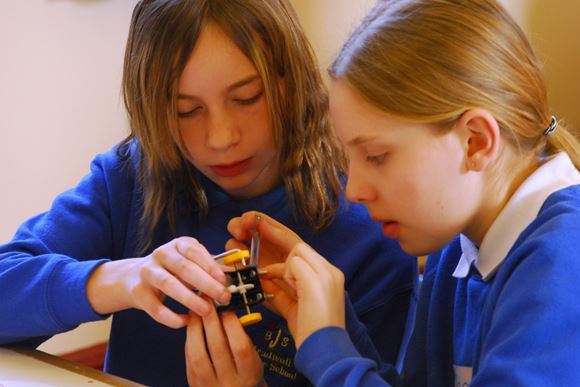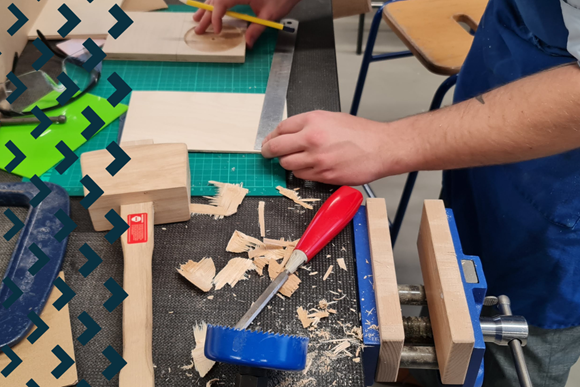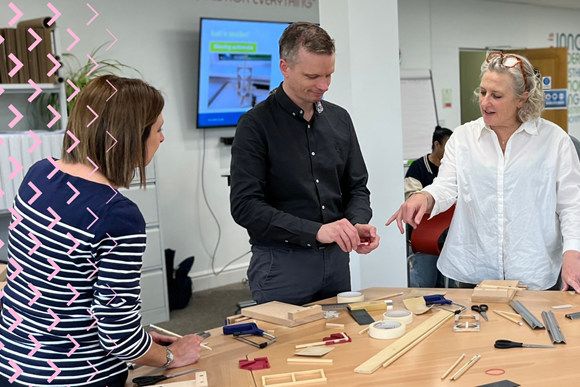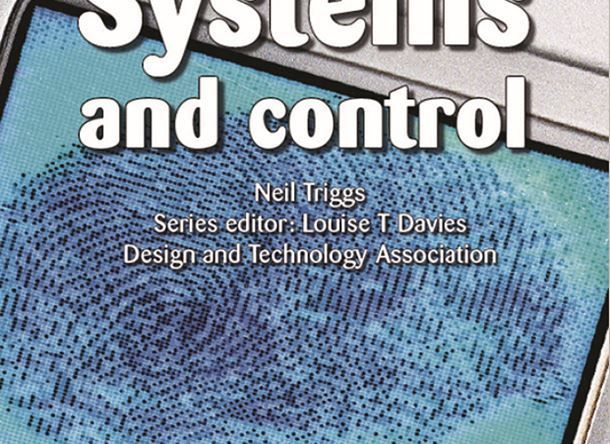GCSE and GCE Design and Technology developments: where are we?
Published 11th May 2015
Written by: Andy Mitchell
There is no doubt about it, keeping up with the changes and possible implications for the future direction of design and technology (D&T) and related qualifications is challenging. The Awarding Organisations, the D&T Association and all those who provide the vital infrastructure that supports the subject are not to blame. Unfortunately, we are suffering from a system that has precious few experts in positions of influence and no experts employed by Government who can take on the role of the QCDA subject officers we once depended upon. Consequently, the passage through the significant education reforms and their impact on the subject community has not been handled as well as it might have been. D&T remains the last subject in the review process to have revised GCSE and GCE Subject Content (criteria) agreed and specifications in place for teaching courses.
This is in addition to the turbulent times the subject has weathered during the National Curriculum review; the continued difficulty in recruitment facing providers of D&T initial teacher education (ITE); and now, the significant negative impact of the school performance measures on D&T. Throughout all of this, the D&T Association has done its utmost and continues to work hard at protecting the interests of the subject. This has involved campaigning to retain the subject in the National Curriculum; influencing the writing of the Programmes of Study; and more recently, working with other stakeholders including Awarding Organisations (AOs) to bring about appropriate change at GCSE. The latter continues to be challenging. Whereas all agree that change is needed, producing a model that will work and is understood by all the users was never going to be easy.
Inevitably amongst those consulted are those who prefer to stick closer to what already exists, whereas there are those who welcome the opportunity to throw out everything and start again. As we always say at the D&T Association, you have to start where schools are, and I believe that most of what has been proposed, and is still under discussion does just that. What has not been dealt with so well is the communication surrounding the process and in particular how the proposals would work. Whereas in the past, a Government agency such as QCDA would have made it its business to keep schools informed of the process; consulted with them more widely; reported on intentions and progress, the DfE does not have the resource to be able to do this. The D&T Association through its website, Branch meetings and consultation events etc has supported the consultation process but this could never be on the scale that national Government funded agencies were able to provide in the past.
As a consequence, lack of communication has led to rumours, misinformation, lack of clarity and resulting chatter on the airwaves leading to schools feeling understandably confused, worried and uncertain as to what is happening. Generally speaking, most schools will be aware of the new timeline for the reforms and are clear that new specifications for food (now called Food Preparation and Nutrition) will be first taught in September 2016 followed by D&T in 2017. But the biggest fear factor arises from the proposal for there being one GCSE title ie Design and Technology rather than a series of endorsed titles. This coupled with the belief that it will compromise numbers of students opting. This is completely understandable so I will address it here.
Firstly, my contention is that as we have a subject called D&T, like other subjects, we should be able to examine it as such. Dividing it up by simply defining lists of materials and associated processes flies in the face of the subject’s purpose and simply pulls it back to its craft roots. We either believe in D&T as recently defined as a concept or we don’t. I don’t hold with the practice of usurping the title but delivering something that resembles practice from a previous era. Students opt not for the title of a GCSE but rather they base their choices on their previous experience of studying it, how the option is portrayed and in particular what they will be required to do.
Secondly, nobody is suggesting that just because there is one title, we have to teach, and students have to learn, about all ‘material’ areas and by implication be examined in them. That would be the equivalent in music, being expected to play all instruments rather than concentrate on one. But whatever D&T activity one is undertaking, we draw on a D&T body of knowledge, skills and understanding that is common and can be defined and therefore examined. But any assessment needs to be carried out through its application not through simply the regurgitating of facts relating to it. This application in the main needs to concentrate on designing and making activity but should also be applied to hypothetical situations presented in more formal examination scenarios. It is in this area that there needs to be significant development in assessment methodology and examination questioning.
Thirdly, if we are to be true to the subject, we have to be able to present students with the opportunity to address challenges that do not have their solutions restricted at the outset by a permitted list of materials. Why in the context of a design course one would ever want to do that is beyond me. But that is not to say that as a consequence of continuing their D&T education building on key stages 1 to 3, students should not develop more skills and interest in a particular aspect of the subject than another. So for example, there will be students who are drawn toward working with textiles in the context of fashion and interior design whereas others will develop their D&T capability through say systems, control and engineering. However, that is not to say that the former student should not have awareness of and be able to make use of programmable control into wearable technologies if appropriate or the latter should not incorporate textiles in their product construction. To straight jacket students and put in their way barriers that prevent creative crossovers in the use of materials and techniques is both artificial and consequently undesirable. It is perfectly possible for teachers and schools to develop approaches that can provide support for students enabling them to use a wider range of resources.
If the above were explained, and examination specifications developed allowing them, and their teachers as professionals, to develop courses reflecting the subject’s purpose, whilst at the same time acknowledging the resources available within the school to deliver it, then students would find that attractive.
The DfE has appointed two ‘Expert Drafters’ to take a lead and established a group that will complete the work that has been done so far in developing the proposal. They and the group have a huge responsibility. On one hand they have to produce the detail that will ensure future D&T examination specifications better reflect current needs and the true nature of the subject. On the other hand, they need to acknowledge where schools and teachers are in terms of their ability to teach those specifications. I believe that a solution will emerge that will enable the subject to move forward and will provide current and future teachers of the subject to provide better and more appropriate courses for students. I also believe however, that it will be necessary in many schools to address fundamental issues to do with what and how D&T is taught. This will inevitably require access to CPD to support the transition. It will require what David Barlex and Torben Steeg refer to on their blog as a ‘wicked problem to which D&T departments must spend time designing a decent solution – not easy but important.’
Finally, we already know that there is likely to be a further drop in the number of entries for the 2015-17 cohort. We know this partly as a result of a survey the D&T Association has recently conducted into the effects of EBacc and Progress 8 measures. This drop has nothing to do with the new GCSE proposals. With this drop comes the likelihood that D&T departments may down-size both in terms of resources and staffing. This knock on effect is also likely to impact on schools being able to offer the new Technical awards. This would be a great shame as these are set to offer a parallel and in some cases additional route for students.
With the appointment of the new Government, formal development of the proposals can continue again. In addition to engaging with Government on examination matters, we will continue to work hard to convince DfE and Ministers of the impact the changes in performance measures are having and how long term damage may be done if this is not addressed. D&T as a subject (and its associated courses) require the skills of D&T teachers to teach them. They play a vital part in providing a broad and balanced curriculum offer in schools.
Less time has been spent on developing new GCE A level provision but more detailed consideration of this will be given as plans for GCSE unfold. Development of A level should build on GCSE and to the same timeline – in terms of specification publication and first teaching dates. There is a real opportunity here to ensure that HEIs are fully involved so that the specification which result are regarded as prerequisites for a range of design and engineering degree courses and not just as a useful third A level.
A parallel development is that of GCSE Engineering. No final decision has been made as to whether this will be offered outside of the D&T umbrella but some work has been done to develop the first draft of revised subject knowledge that specifications must cover. It remains to be seen how this will work, as Ofqual do not wish there to be duplication of content across different awards. This potentially creates problems. Updating the Engineering requirements by making more reference to the use of ‘high tech’ resources in design engineering ways, could be seen as mirroring aspects of D&T. We would not want the ability to use electronics etc. taken out of D&T. Equally, we would not want designing to be removed from Engineering. Defining the distinct difference between the two subjects will be tricky.
As developments unfold, we will continue to keep you informed here and in D&T Stream. As always, we welcome your views and comments on our blogs.
comments powered by Disqus Back to Blog








